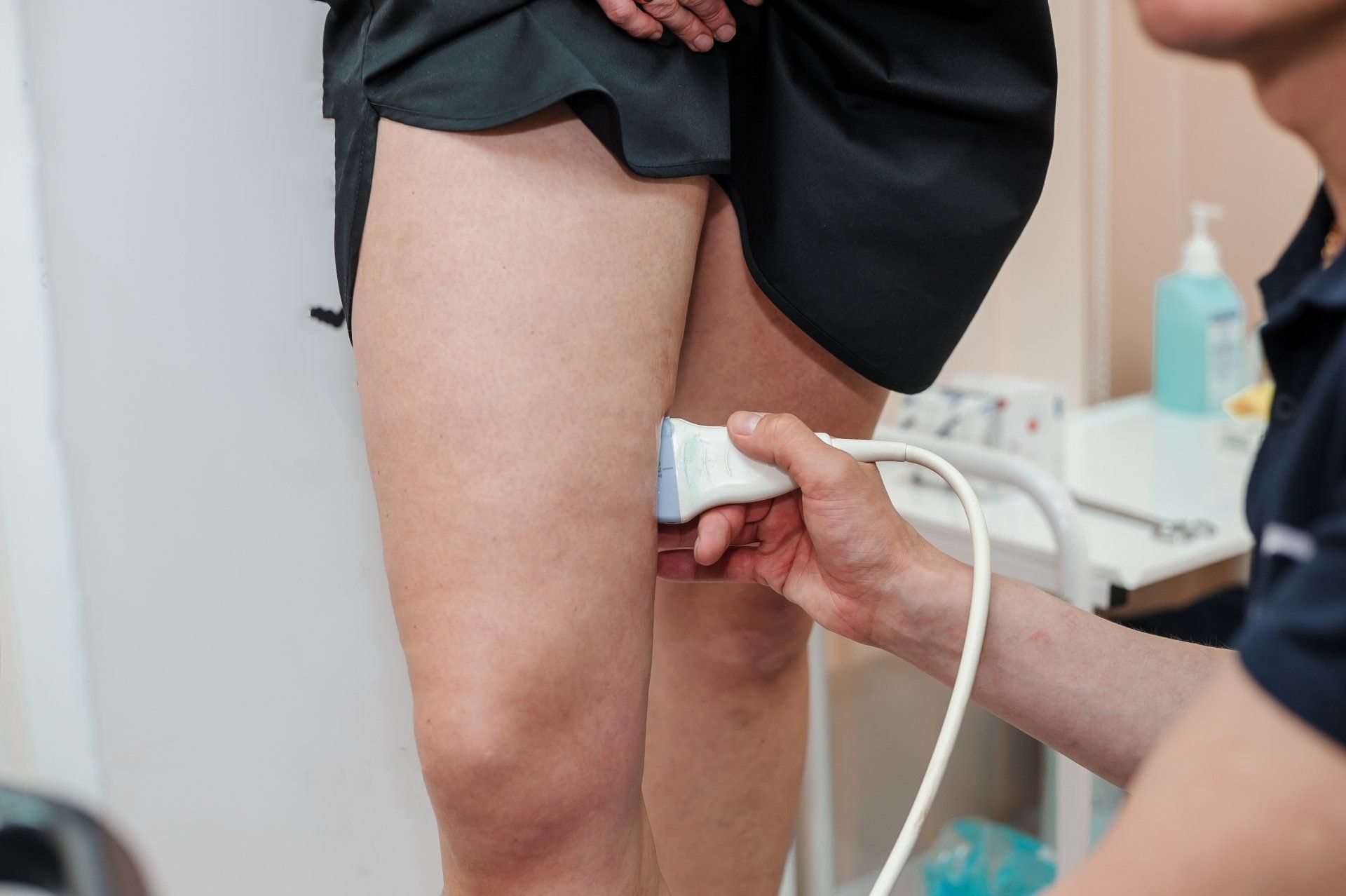Vein Ultrasound Tests

Venous Ultrasound/Duplex
This is an ultrasound test to check for the presence of Deep Vein Thrombosis (DVT) or Superficial Thrombophlebitis (SVT/Phlebitis) in the legs or arms. If DVT is present, it needs to be treated as it can lead to fatal clot traveling from the legs to the lungs. It will also check for incompetent deep veins in the legs. This test is commonly ordered if a patient has swelling in the legs, pain in the legs, or if a patient had a DVT to follow-up to see if the clot is getting better or worse.
Venous Insufficiency Test
This is a more involved ultrasound test that takes 1-2 hours to perform. It first checks for Deep Vein Thrombosis (DVT) and Superficial Thrombophlebitis (SVT/Phlebitis). But it also checks the function of the veins in the legs. Normal blood flow should travel from the feet up to the heart. There are one way valves in the veins that prevent blood from falling back down the leg to the foot with gravity. If these valves are not working properly, the ultrasound/duplex will show the blood falling down toward the feet. This is called venous insufficiency. It can lead to swelling, varicose veins, skin changes, and eventually venous stasis ulcers.
Vein Mapping to Plan for Dialysis Fistula Surgery
This ultrasound will examine the deep veins and superficial veins (near the surface of the skin) in the arms. It will check for clots in the veins, but will also measure the size of the veins (and arteries). This test is usually ordered by your kidney doctor (nephrologist) if you have chronic kidney disease or end stage kidney failure. This test will help your vascular surgeon decide if your veins are large enough to support dialysis with an arteriovenous fistula (if the superficial veins are around 3 mm diameter) or if you need a synthetic arteriovenous graft (if the superficial veins are small, but the deeper veins are large). See Vascular surgery for details of these surgeries.
Vein Mapping to Plan for Bypass Surgery
This ultrasound will check the superficial veins (near the surface of the skin) which can be used for heart bypass or leg bypass for peripheral arterial disease or peripheral artery aneurysms. It not only checks for any clots or blockages in these veins, but checks the size of the veins. A good vein for bypass is at least 3 mm in diameter.


